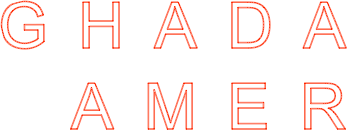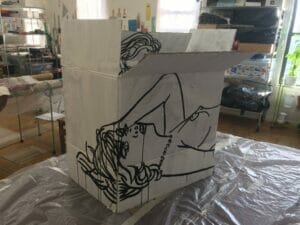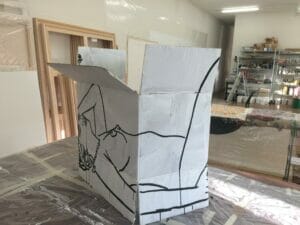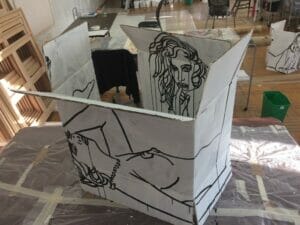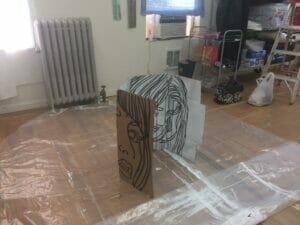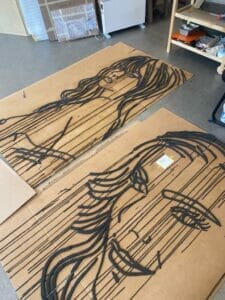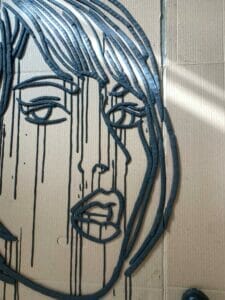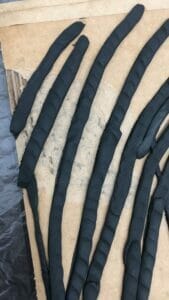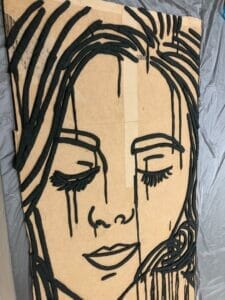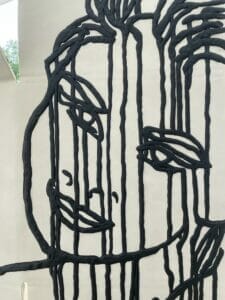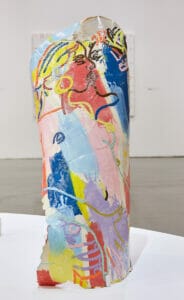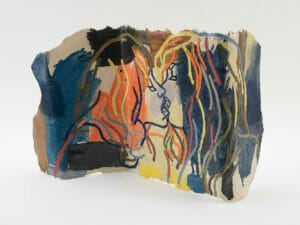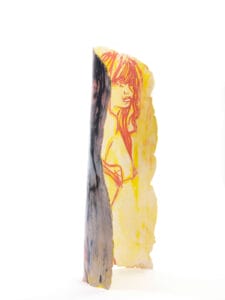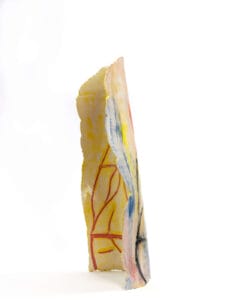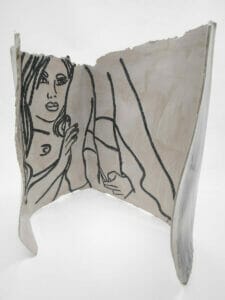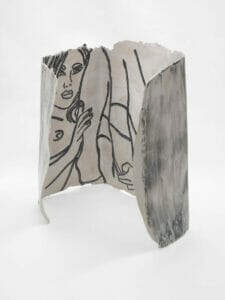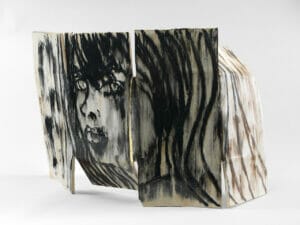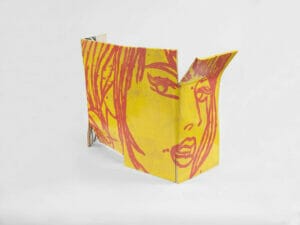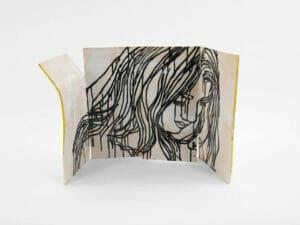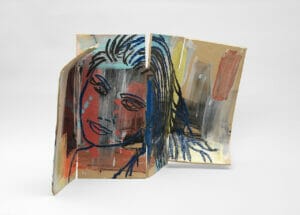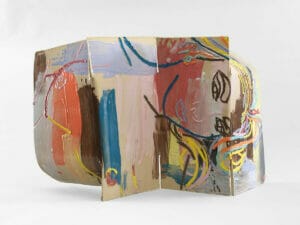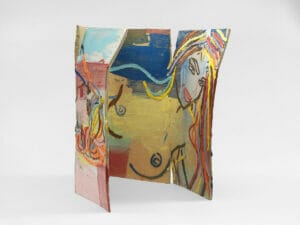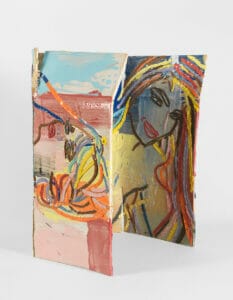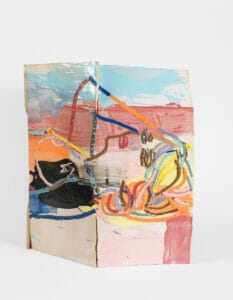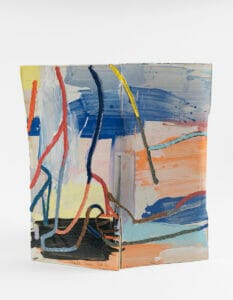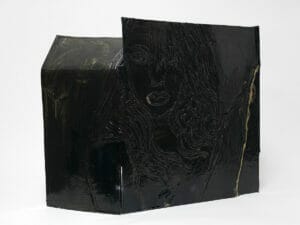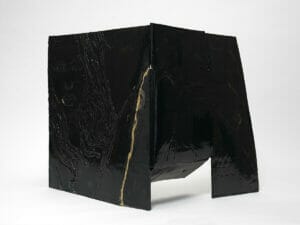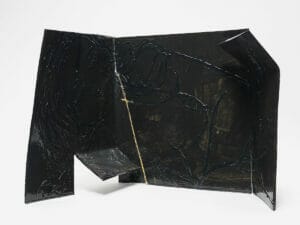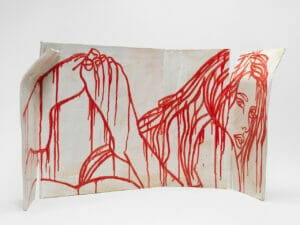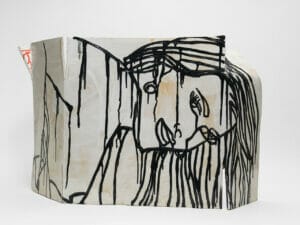As she continued to paint one side of her slab plates and to draw on the other, Ghada Amer began experimenting with drawing on both sides of the clay work. This meant experimenting with ways to stand the work in space (as opposed to hang it on the wall) and to thus create freestanding, increasingly larger, 3D sculptures.
Ghada Amer quickly realized that the only way to create freestanding large sculptures was to anchor them on three different points on the floor or on a base. This led her inevitably to create screen shaped ceramic sculptures which, to her great chagrin, were extremely fragile and kept breaking as they dried or baked in the kiln.
In an effort to assist Ghada Amer in reaching her artistic goal, Adam Welch advised her to create maquettes of her sculptures using flattened cardboard boxes. These maquettes, initially meant to be discarded once the sculptures were produced, were part of the process that Welch needed to design a structure that would allow the production of sturdier sculptures.
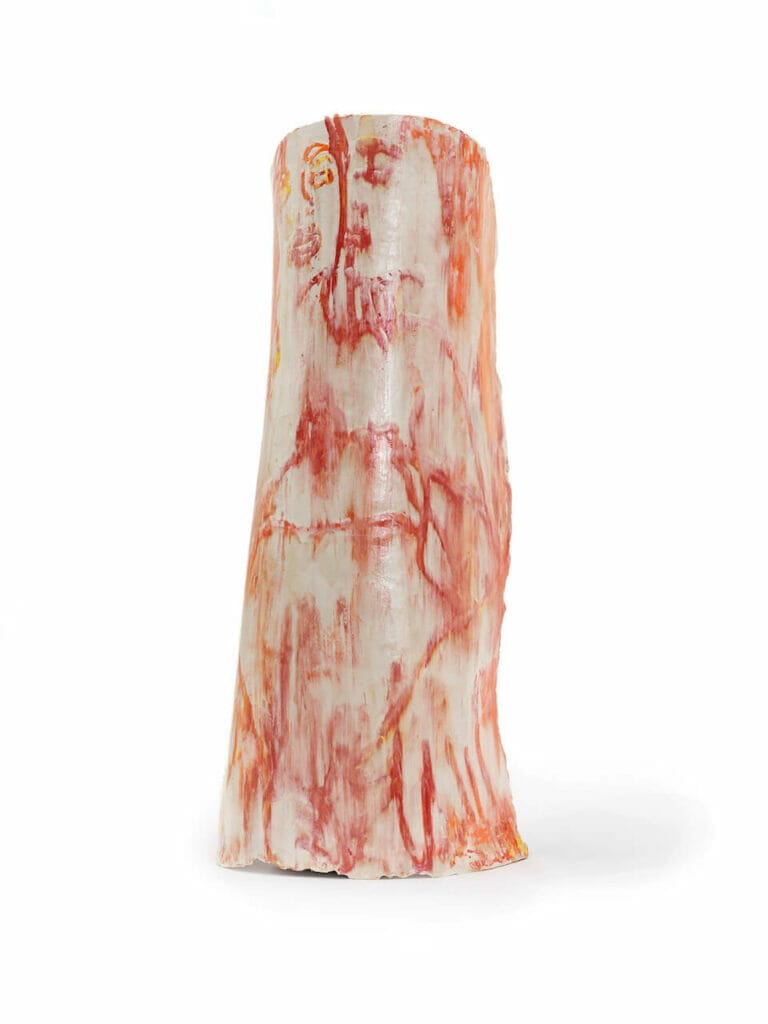
The technique of using cardboard boxes to create a maquette of the intended sculpture turned out to be an essential tool for the artist. Ghada Amer continued exploring and experimenting with flattened and painted cardboard boxes in the development of her larger ceramic sculptures like of her later bronze sculptures (Paravent Girls).
The troubleshooting process led to an artistic feat and allowed the artist to realize sturdy works made of precariously standing, curving, ceramics.
A second eureka moment for the production of large, sturdy two-sided sculptures occurred when Lisa Chicoyne, Assistant Director of the Greenwich House Pottery, advised Amer to reinforce the wet clay with fiber and paper pulp supports which would burn off during the firing. This unconventional method of clay work turned out to be another key strategy that allowed Ghada Amer to fearlessly experiment and create henceforth structurally sound large 3D ceramic sculptures.
Increasingly confident in her newly acquired skills, Ghada Amer experimented with larger and larger ceramic sculptures. Some of these were intended as prototypes for the larger bronze sculptures that had always been and remained (let us not forget!) her ultimate goal.
However, Ghada Amer’s love of ceramics and her engagement with that medium led her to create and keep some of her ceramic works as sculptures in their own right.
